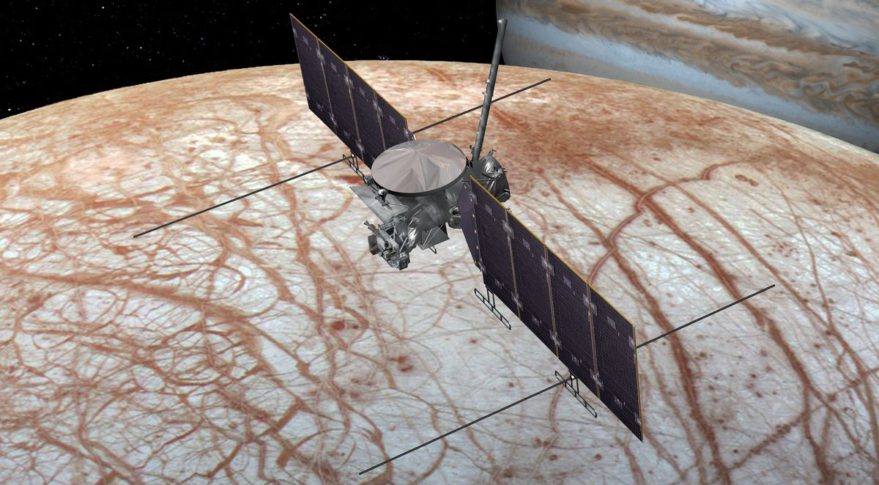Europa Clipper Mission to Jupiter Gets $600M in NASA's 2020 Budget Request

NASA's Europa Clipper mission could receive $600 million for the fiscal year that begins in October, according to budget request documents released Monday (March 11) by President Donald Trump's administration.
Those documents also suggest that NASA will look to launch the spacecraft on a commercial rocket, rather than on a government rocket, which the administration states would save more than $700 million.
The Europa Clipper mission is scheduled to launch in 2023 and will explore Europa, one of Jupiter's icy moons and one of scientists' top contenders for a spot to find life beyond Earth. Researchers believe the moon hides a global liquid ocean beneath its icy shell; if the rocky surface below that ocean is geologically active, it could tick all the boxes that life seems to require. (That does not mean life is definitely there to be found.) The Europa Clipper mission is designed to investigate whether those requirements are present.
Related: Scientists Prepare for Mission to Jupiter's Icy Moon Europa
The funding news comes in the wake of a NASA decision to remove one of the previously approved instruments from the spacecraft, a magnetometer called Interior Characterization of Europa Using Magnetometry (ICEMAG). NASA cited cost concerns as its motivation and noted that it would look for a new, simpler magnetometer to fly on the probe.
Such an instrument would be crucial for confirming that Europa features a global liquid ocean, characterizing that water and measuring the thickness of the ice shell above it. The spacecraft design is currently undergoing its final review and is not yet being built.
The budget request may address one of the team's lingering uncertainties in planning the mission: what rocket NASA would use to launch the probe. The mission requires the heft of either a SpaceX Falcon Heavy, which has flown once, or NASA's Space Launch System, SLS, which has never flown. Rocket choice will affect both the project's budget and its mission schedule: Riding by SLS, the probe would arrive within about three years; by Falcon Heavy, it would get there within five or six years.
Get the Space.com Newsletter
Breaking space news, the latest updates on rocket launches, skywatching events and more!
The Europa Clipper funding is part of a $2.6 billion budget request for planetary science. These documents represent only what NASA and the Trump administration would like to prioritize and accomplish in the coming year; actual budgets must be determined by Congress.
- Scientists Prepare for Mission to Jupiter's Icy Moon Europa
- Europa’s Buried Ocean Could Rise to the Surface (Video)
- Photos: Europa, Mysterious Icy Moon of Jupiter
Email Meghan Bartels at mbartels@space.com or follow her @meghanbartels. Follow us on Twitter @Spacedotcom and on Facebook.
Join our Space Forums to keep talking space on the latest missions, night sky and more! And if you have a news tip, correction or comment, let us know at: community@space.com.

Meghan is a senior writer at Space.com and has more than five years' experience as a science journalist based in New York City. She joined Space.com in July 2018, with previous writing published in outlets including Newsweek and Audubon. Meghan earned an MA in science journalism from New York University and a BA in classics from Georgetown University, and in her free time she enjoys reading and visiting museums. Follow her on Twitter at @meghanbartels.









